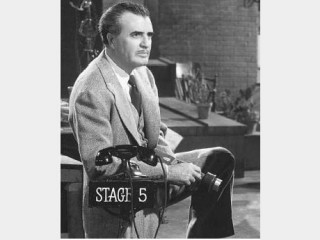
Cedric Gibbons biography
Date of birth : 1893-03-23
Date of death : 1960-07-26
Birthplace : New York City, New York, US
Nationality : American
Category : Famous Figures
Last modified : 2011-02-01
Credited as : Designer, and art director,
The production designer Cedric Gibbons, though little-known to many filmgoers, strongly influenced many of Hollywood's greatest films.
Gibbons was born in New York on March 23, 1893. Already educated in art and architecture, he began his movie career just as the film industry started rolling. He obtained an assistant's job at the Edison Studios and worked there from 1915 to 1918. Gibbons made a major mark on film design at this time when he insisted on the use of three-dimensional scenery rather than painted backdrops.
In 1918 Gibbons left Edison for a position as art director at Goldwyn's in New York. Later he moved with Goldwyn and Company to California. In 1924 came a significant turning point. MGM studio was formed, and Gibbons became its supervising art director. In 1930 Gibbons married the actress Dolores Del Rio. The couple divorced in 1941.
It is not easy to determine which of the films in his very vast filmography can really be completely credited to Gibbons. Any film coming out of MGM would list Gibbons as art director. Gibbon's greatest contributions would go to the "prestige" pictures, such as Marie Antoinette, Ben-Hur, or Camille . He collaborated on many of the other MGM movies and merely approved the rest. Those pictures produced after his heart attack in 1946 would have even less of his touch. But it is misleading to assume Gibbons blindly accepted the ideas of others, taking credit for their creations. Gibbons felt strongly about what was right and wrong for MGM and getting his approval was no easy task. Vincente Minnelli described the Gibbons reign as a "medieval fiefdom, its overlord accustomed to doing things in a certain way." As stifling as this might be to the creativity of other artists and directors at MGM, this attitude served its purpose. MGM films shared a distinctive "look." This was achieved because all employees responsible in any way for the visual appearance of the film—from props to costumes to special effects—had to confer with Gibbons. He maintained MGM's visual continuity and maintained this control through the decades.
Several qualities characterize the MGM picture during the Gibbons era, particularly elegance and glamour in his films from the 1930s. It did not matter if the scene or the moment called for it; the floors would still be highly polished and the chandelier crystal. Luxury and the elaborate were encouraged. A Gibbons-approved set could be as active as one of the dancers during a production number, littered with booms and turntables.
Like the popular British and French interior designers between the wars, Gibbons preferred all-white rooms. The harsh contrast of shapes and shadows that one would find in the German expressionist-influenced studios such as Warner Brothers or Universal would never be found at MGM. Gibbons sets were the height of escapist fantasy, as light and witty as a Cole Porter tune.
Gibbons also preferred to have MGM sets sculptural, perhaps harking back to his days as an artist and architect. This penchant for the three-dimensional might have been part of the reason for Vincente Minelli's animosity towards Gibbons, for Minelli films such as An American in Paris require a two-dimension emphasis for artistic effect. Fortunately, in spite of the difficulties, An American in Paris managed to gain Gibbons's dictatorial approval (and ironically enough won him an Oscar).
Gibbons retired in 1956 and died on July 26, 1960 in Westwood, California. He had been nominated for 37 Academy Awards in his career and had won 11. In addition, he is credited with designing the original Oscar statuette. This streamlined, planar sculpture is an appropriate homage to Gibbons's oeuvre and serves as a reminder of the film industry's more glorious and powerful past.
















